

Home
About Us
Allotments
Garden Equipment
Seed Suppliers
Manure Problems
Children's Pages
GLA Blog
Weather Blog
School Veg Patch
Useful Links
Butterfly
Most species of butterfly are welcome in the garden and their caterpillars will do no damage to your cultivated plants. They will add extra interest and colour to your garden or allotment plot and can be encouraged by allowing a bed of nettles to grow and planting nectar rich flowering plants for the butterflies.
Of the butterflies that I have regularly spotted on our allotment plot the Small Tortoiseshell, Peacock, Red Admiral and Comma caterpillars feed on nettles and the Speckled Wood and Gatekeeper caterpillars feed on grasses. The Painted Lady caterpillar feeds on thistles but may nibble hollyhocks and aster plants.
Large and Small White butterflies are very similar in appearance – the main difference being in their size. There may be up to three generations of these butterflies in a year. The first generation can be seen from Mid April to the beginning of June, the second from mid July to the end of August and in good years (for the butterfly) the third generation from September to October. The population of the Large White is increased in August by swarms arriving from the continent. So in effect your cabbages are only really safe over winter!
The butterflies which cause problems in the vegetable plot are the whites, in particular the Large and Small White butterflies. In fact their preference for laying eggs on plants from the cabbage family has earned them the nickname of Cabbage Whites. The caterpillars will also feed on nasturtiums which contain the same strong smelling oils as plants in the brassica family.
The butterflies in the photos below are from the top - left to right
Speckled Wood - Peacock
Small Tortoiseshell - Red Admiral
Gatekeeper - Comma
Painted lady - Small White
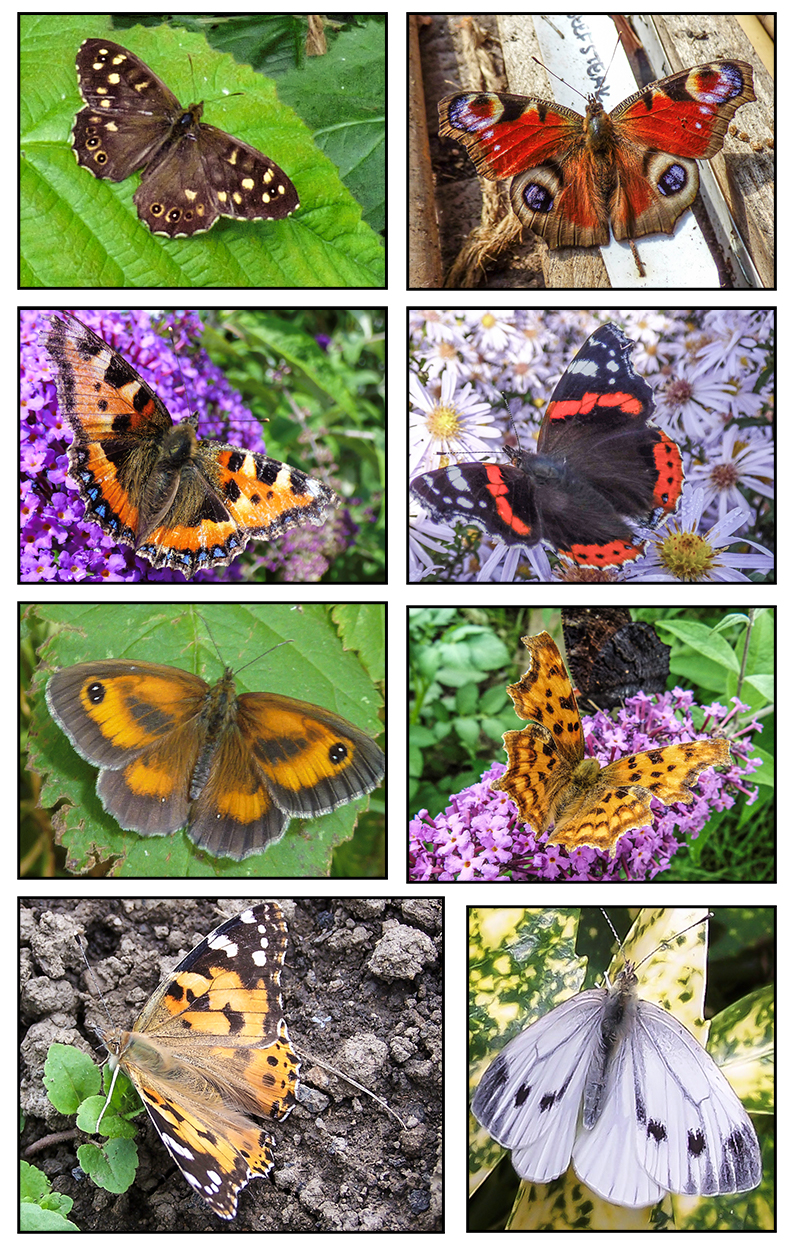
The life cycle of butterflies is one of nature’s miracles and all species more or less follow the same pattern.
Butterflies locate a mate by sight and smell. When two butterflies meet they will fly in circles around one another moving upwards as they circle. They identify a member of the same species by the colours and patterns on their wings and identify whether they have met a potential mate through smell.
If the pair decides to mate they will fly off together and find a suitable landing site.
Once they have mated the female will fly off in search of a suitable plant on which to lay her eggs. Small White butterflies lay their eggs singly but the Large White will lay clusters of eggs on the underside of leaves. This means that it is the Large Whites that cause most damage to your plants. The first eggs are usually laid in May with the caterpillars active in June.

Although Small and Large White butterflies are very similar in appearance their caterpillars are quite different. The caterpillar of the Small White is green and difficult to spot; it also tends to feed on the heart of the plant. The caterpillars of the Large White are black and yellow striped which in common with many other insects advertises their foul taste and deters birds from picking them off and eating them. If you look closely you will also notice that the caterpillar is covered in hairs which also deter birds. Colonies of Large White caterpillars can strip a plant of leaves completely.
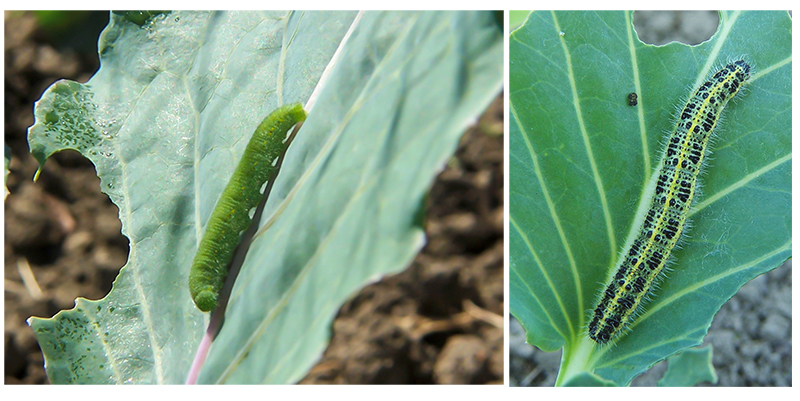
Caterpillars have strong jaws and are basically an eating machine. The first meal of the newly emerged caterpillar is the remains of its own egg. If you watch them you will notice that they seem never to stop munching and as a result grow quickly. As with other insects their skin isn’t flexible and so as they grow their skin tightens and eventually splits and the caterpillar crawls out complete with a fresh new skin. The caterpillar will shed its skin several times.
Once the caterpillar has reached a suitable size it will crawl away and find a safe place in which to turn into a chrysalis. The caterpillar will spin a silken thread from which it will hang and it will wriggle from its skin for the final time. This time the caterpillar will emerge as a chrysalis. The chrysalis of the Large and Small Whites are very similar in colour to their caterpillars.
The caterpillars however, don’t have it all their own way; a large proportion will be hosting the enemy within! A species of ichneumon wasp (sometimes called an ichneumon fly) lays its eggs inside the body of the caterpillars. The grubs hatch inside the caterpillar and effectively eat the caterpillar from the inside out. Initially the grubs avoid eating any vital organs that may result in the caterpillar’s death. If the caterpillar died before the grubs had grown large enough to break out of their host then they would be imprisoned within the dead caterpillar. The grubs tend to reach full size just before the caterpillar pupates. The small white grubs emerge from the caterpillar’s body and spin tiny yellow cocoons around themselves and then pupate themselves.
If you look very carefully at the above photo you will see some white grubs that have not yet spun cocoons.
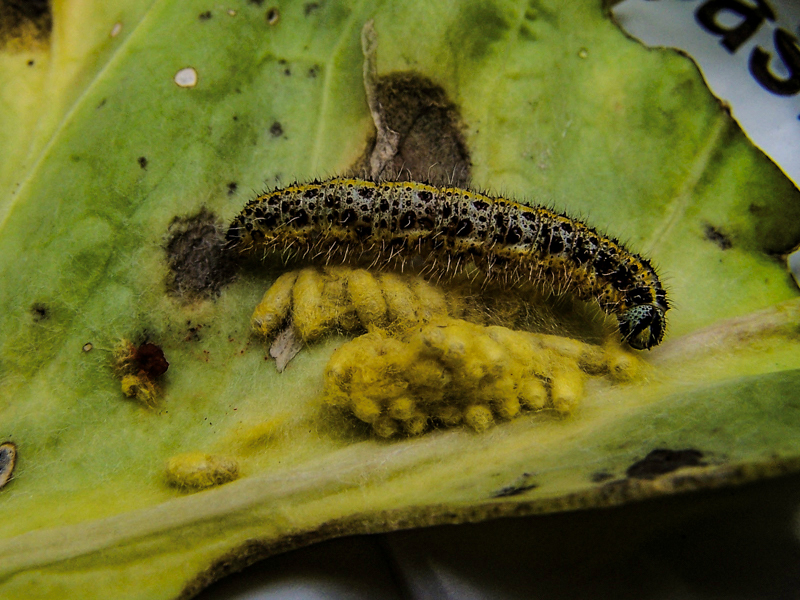
If the caterpillar avoids falling prey to the ichneumon wasp and manages to pupate it isn’t completely out of the woods. It could fall victim to another parasitic wasp called a chalcid that lays its eggs inside the chrysalis!
Having survived all the hazards of growing up, the large and small white butterfly will only live for a few week.
Butterflies have many small eyes clustered together to produce a mosaic of images.
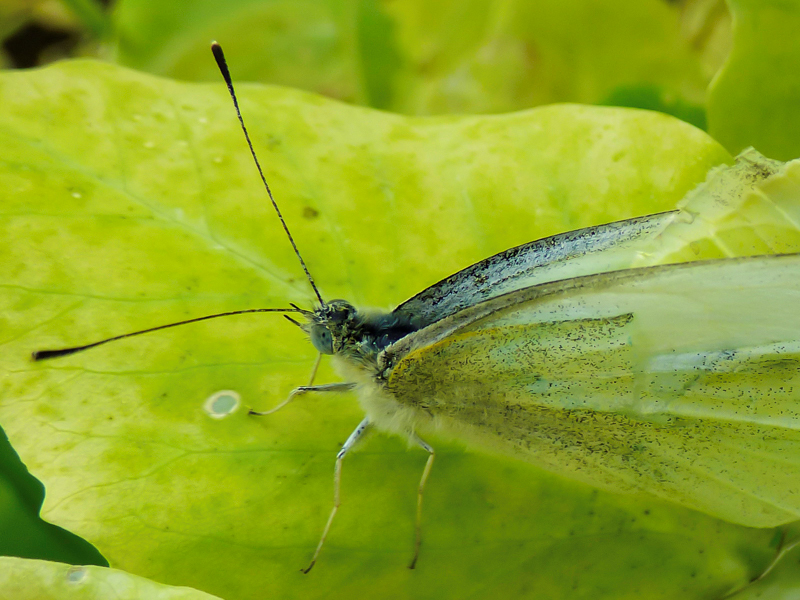
Butterfly visions can cover almost 360 degrees at once. It's hardly surprising that you are unable to sneak up on them and they can also quickly home in on young brassica plants.
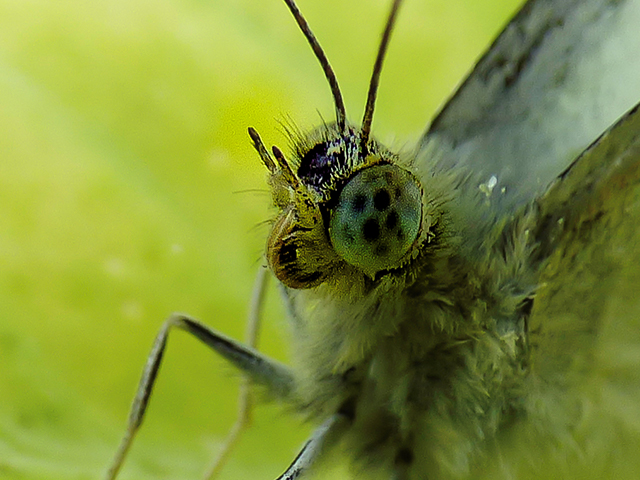
Butterflies have a pair of segmented antennae which unlike thise of a moth are clubbed at the end,
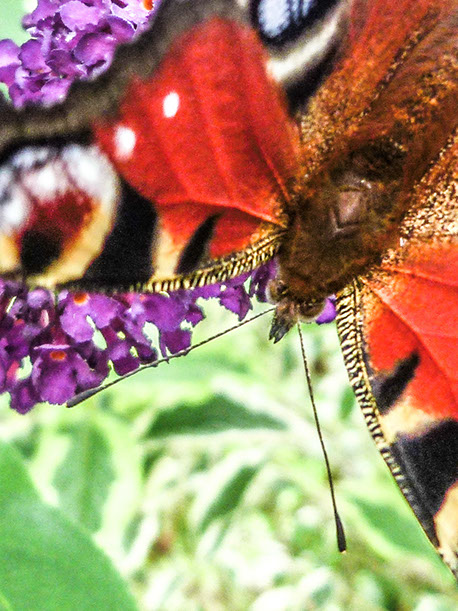
The underside of butterflies' wings is less colourful and helps the insect to be camouflage when the wings are closed above its body.
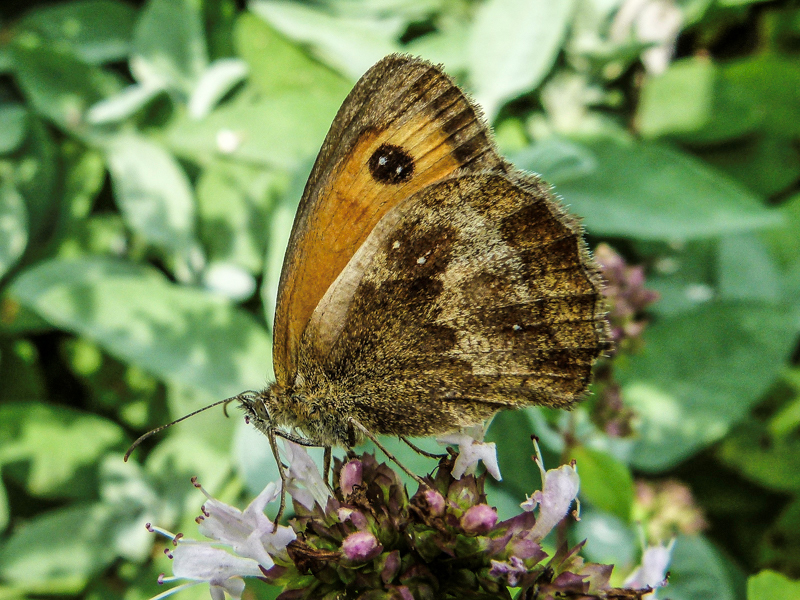
Despite this many butterflies can be identified by the undersides of their wings. The comma butterfly's name comes from the white comma like marking visible on the underside of the wing.
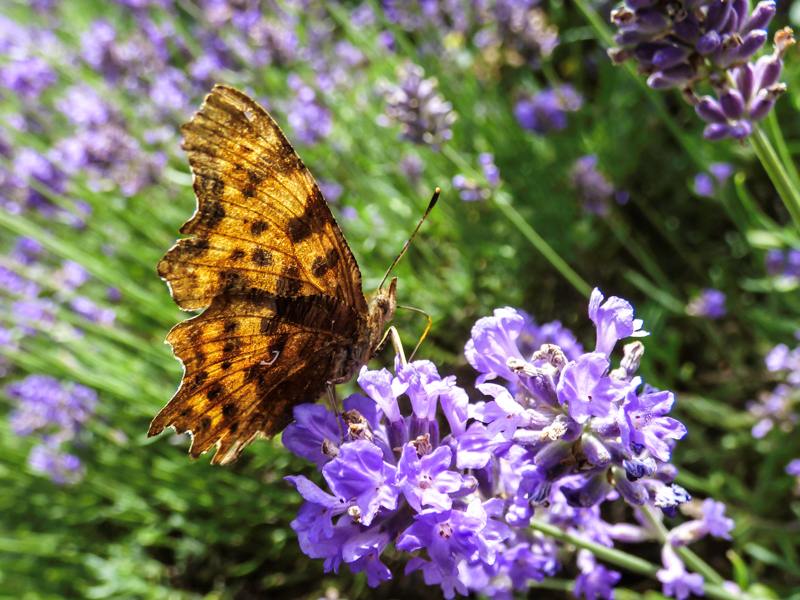
The comma butterfly above is sipping nectar from the lavender flower by dipping its proboscis into the flower. At a simple level this can be thought of as being similar to sucking liquid through a straw but it is more complex than that. When the butterfly is not feeding the proboscis is curled up as shown in this photo above.
Our Plot at Green Lane Allotments Blog | A Gardener's Weather Diary | School Vegetable Patch Website
© Our Plot on Green Lane Allotments - Please email me if you wish to use any of this site's content